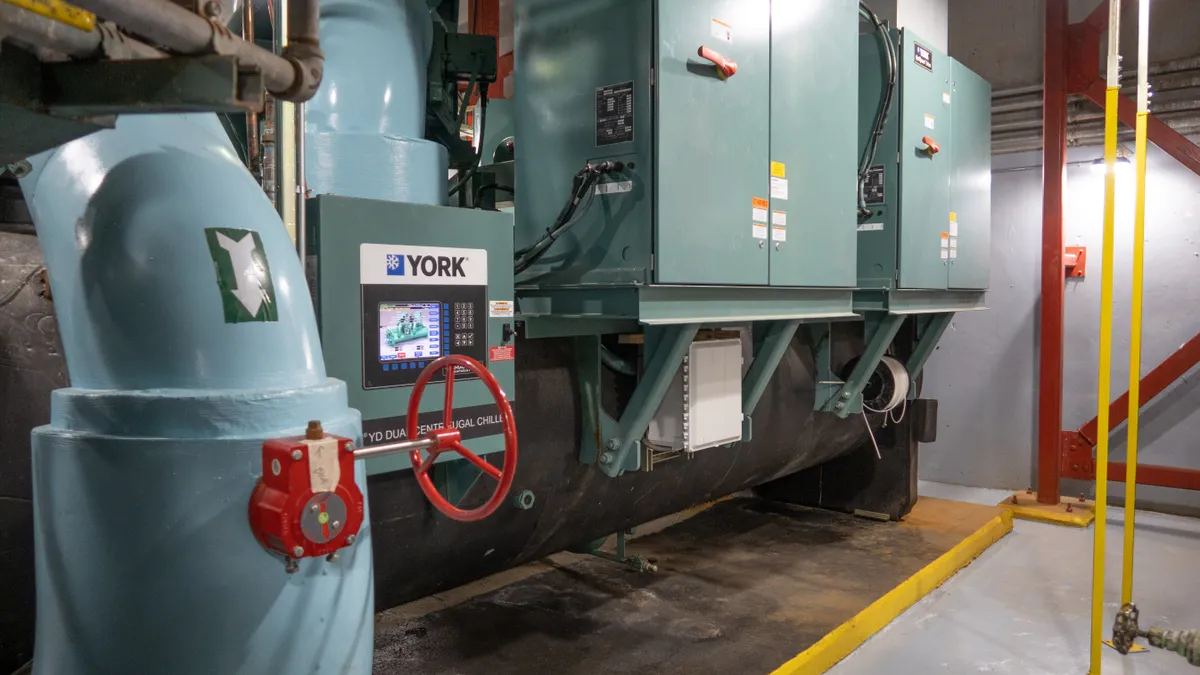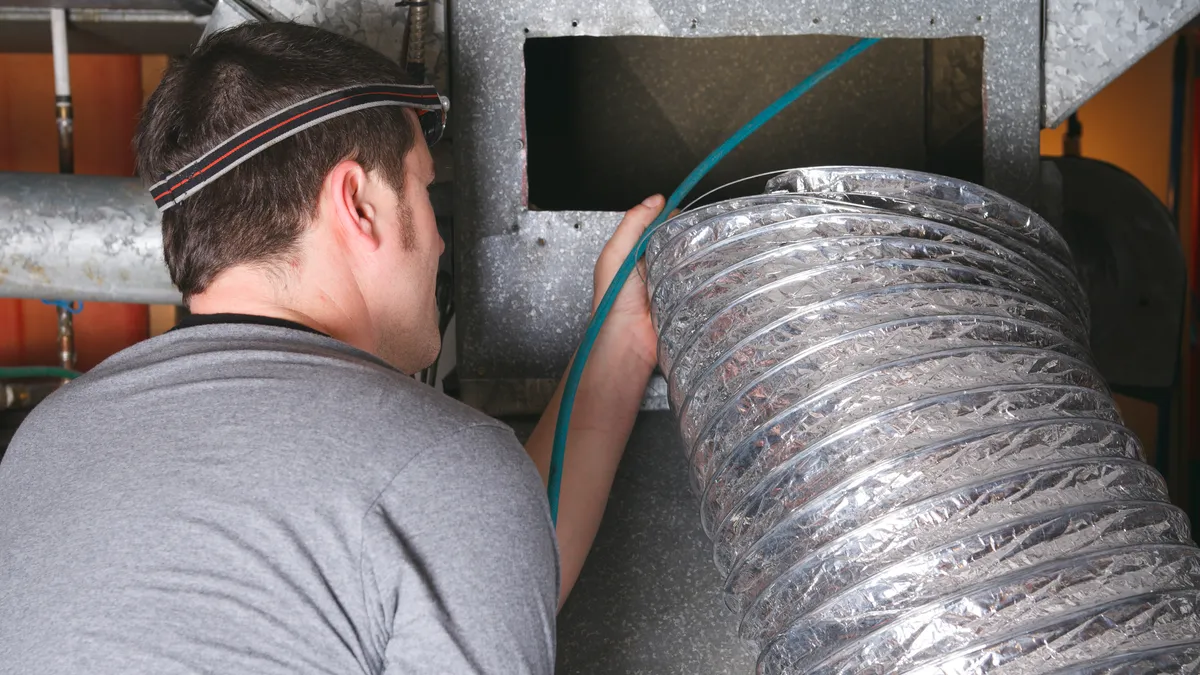Dive Brief:
- New York City’s Fashion Institute of Technology installed a $7 million all-electric chiller, which the New York City Department of Administrative Services said will help expand the city’s net-zero infrastructure.
- The 1,500-ton chiller, installed earlier this month, is expected to reduce FIT’s annual energy costs by over $1 million and slash annual greenhouse-gas emissions by nearly 1,000 metric tons, New York City’s DCAS said in an April 8 news release.
- The York MaxE Chiller will cool more than 1.2 million square feet across five academic buildings on FIT’s Midtown Manhattan campus, DCAS Senior Program Manager Heta Panchal told Facilities Dive. Funding for the project came from DCAS’s Accelerated Conservation and Efficiency Program, Panchal said.
Dive Insight:
The new unit replaces a 55-year-old, 1,000-ton steam chiller, also manufactured by York, that was hampered by “low reliability, high maintenance [costs], and high operating costs for chilled water and high emissions impact,” despite a refurbishment in 2006, Panchal said.
FIT’s chiller replacement comes online as the state and city of New York target significant GHG emissions reductions in the coming years. January marked the start of the first emissions compliance period for New York City’s Local Law 97, which mandates emissions reductions of 40% by 2030 and 80% by 2040 in buildings over 25,000 square feet.
The project was completed as part of DCAS’ ACE capital grant program, which provides funding and technical support for energy efficiency, emission reduction and distributed generation capital projects, according to the release.
FIT upgrades funded by DCAS include smaller-scale improvements that “focus on reducing energy consumption,” including new or upgraded air handling units, variable frequency drives, energy-efficient lighting and a heat recovery wheel, Panchal added.
FIT said it has also installed solar panels totaling 72 kW on and adjacent to the Shirley Goodman Resource Center to generate enough electricity for most of the lights in the Fred P. Pomerantz Art and Design Center.
Through its partnership with DCAS, FIT has reduced its GHG emissions by 57% over 15 years, Sherry Brabham, treasurer and vice president for finance and administration at FIT, said in a statement.
Before moving ahead with the chiller replacement, FIT conducted a feasibility study with funds from DCAS’s Expenses for Conservation and Efficiency Leadership program, Panchal said. The study considered the viability of replacement options including direct-fire gas absorption, single-effect lower pressure steam absorption, single-effect absorption steam chillers and double-effect high pressure steam absorption chillers as well as the electric centrifugal system, which FIT ultimately selected, Panchal noted.
The new chiller required modifications to FIT’s electrical infrastructure. These included the addition of a new 460/480-volt, 4,000-amp electric service that connects to a new switchboard and metering section in the sub-basement of one of the buildings, along with “a main service switch for the chiller and a second main service switch for other assorted power requirements for installation,” Panchal said. Panchal added that the upgrades replaced the previous service line and an associated 6,000-amp switchboard.
DCAS and its partner agencies are also working to identify electrification opportunities in city-owned buildings, Panchal said.
The New York City Council, for example, is considering a bill that would require 100 MW of solar photovoltaic systems on city-owned buildings by the end of next year, with a broader goal of installing 150 MW of solar on public buildings, industrial properties and parking lots by 2030.
Crews have installed a number of rooftop solar arrays across New York City in recent years, including a 55-kilowatt system at Elmhurst Hospital in Queens earlier this year.













